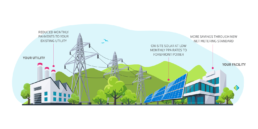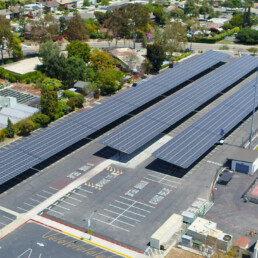Solar legislation in the United States, particularly on the east coast, is in many ways comparable to a basketball game. Commonly, the home team’s score is down for most of the game, though usually not far below the opposing team. In the final quarter of the game, the score gets tighter, tying up in the final moments. As the timer ticks down to the final seconds, the home team makes their final shot before the buzzer determines the winner. In the solar industry, the game can go either way depending on the players, and in New Hampshire, things are getting interesting.
All eyes are now on this small but mighty state, where a new bill pushing a 5MW net metering cap comes back to vote after being defeated by the state’s governor earlier this summer. Should New Hampshire House Bill 365 override its veto, entities such as schools and small businesses would benefit from expanded solar and net metering practices; reaping the benefits of cheaper, cleaner electricity. For New Hampshire, this is the game they’ve been prepping for all legislative season, and we’re close to finding out who the winner will be.
Setting the Stage for Solar Growth
New Hampshire is an interesting solar market for a couple of reasons.
High Existing Electricity Rates: Firstly, there is an immense opportunity for solar to bring down electricity costs. The state has some of the highest retail electricity prices in the country, ranking just below California at $20.34 cents/kWh. This is largely due to import prices from out of state.
Local Renewable Portfolio Standard (RPS): New Hampshire also has an RPS that requires 25.2% of retail electricity sold to end-use customers to come from renewable sources. The addition of new solar projects (operating from 2006 onwards) would help meet this RPS standard. While New Hampshire is seemingly on track to meet this target with the help of renewable energy sources (primarily wind power, hydroelectric and biomass), coal and fuel oil are still dominant sources of electricity and heating. Renewable energy supporters in the state advocate for solar to meet this goal while reducing dependence on costly imported fossil fuels.
HB 365 Impact: Increasing Net Metering
Currently, New Hampshire has a 1 MW net metering cap for solar projects; meaning that those interested in selling renewable energy back into the electric grid are only allowed to sell up to 1 MW at a time at the retail rate – anything above 1 MW is paid at a lower wholesale rate. Raising that limit would encourage the development of large commercial and municipal projects in the area, likely driving down electricity costs and allowing customers to receive more credit through net metering.
Enter New Hampshire’s Net Metering Bill House Bill 365 and Senate Bill 446. Proposed earlier in 2018, the bill advocated for raising the net metering cap in New Hampshire from 1 MW to just under 5 MW (4.9 to be exact). HB 365 was originally vetoed by Gov. Chris Sununu on the terms that raising the MW cap would lead to cost shifting primarily to the business community since the credit given to net metering customers would be above the utility’s avoided cost (wholesale rate).
Given the increasing support from New Hampshire citizens for both environmental and economic reasons, the bill is up for vote again. This time, however, utilities will not be allowed to sell net-metered energy back to the New England ISO at premium rates. By eliminating this potential for cost-shifting to ratepayers, this legislation now directly addresses the Governor’s concerns and is on the fast track to becoming law. The revised bill, which has bipartisan support and the backing of 11 city mayors, has already passed the state legislature 254-98, surpassing the two-thirds margin needed for it to be veto-proof.
The Benefits of Increased Net Metering
Should HB 365 pass, commercial entities and ratepayers can expect to see major benefits. First, increasing the net metering cap will mean that commercial projects, usually from 500 kW to 5,000 kW, are eligible to receive more net energy metering (NEM) credits, in which solar energy system owners/ hosts are credited for the energy that they supply back to the electrical grid In New Hampshire. According to the New Hampshire Public Utilities Commission large generation facilities, such as schools, public buildings, and medium-sized businesses are currently capped at 1 MW.
School districts and other public entities are prime beneficiaries of expanded net metering due to their size, which makes it easier for them to reap the benefits without having to participate in the wholesale market. Expanding the 1 MW cap would create more opportunities to have more on-site solar energy with more net metering, resulting in greater savings.
The passing of HB 365 could lead to increased solar investment in New Hampshire, which has many benefits along with new challenges. For entities that are not familiar with solar procurement, the process may seem daunting. With the Federal ITC for solar commencing its stepdown after 2019, there is even more incentive to procure solar power. Thankfully, there are a few financing options that help make solar procurement faster and more accessible, especially for organizations that cannot make system purchases.
Net Metering: How it Works

The Easiest Option: A Power Purchase Agreement
Solar Power Purchase Agreements, commonly known as a PPAs, are among the most accessible methods of accessing the benefits from solar systems. In a PPA, a customer enters into a financial agreement with a project developer who provides the design, permitting, financing, and installation of either an on-site or off-site solar project at no upfront cost to the customer. Customers benefit from the receipt of clean, renewable energy without capital outlays or the complexity of ownership; such as operations and maintenance.
The developer earns income by selling the energy (kWh) generated by the system to the customer at a fixed rate that is typically lower than the local utility’s retail rate. The revenue from the PPA in addition to any tax credits and other incentives generated by the system is then used by the developer to recover the initial costs of development and installation.
PPAs typically last for 20- 25 years and the developer is responsible for the operation and maintenance of the system for the duration of the PPA term. At the end of the PPA contract term, a customer may be able to extend the agreement, have the developer remove the system, or purchase the solar energy project from the developer.
New Hampshire in the 5 MW Future
The fate of New Hampshire’s net metering bill will be determined very soon. Should it pass, increasing the 1 MW net metering cap, New Hampshire can expect to be flooded with developers and investors looking to get in on the action, bringing a surge of excitement and new investment into the state. For residents, businesses and public entities, this presents a new opportunity to pursue solar that had previously been restricted. With the likely passing of this bill and the initial step down of the solar ITC, there will likely be no better time to take advantage of solar than now. Although the ITC is stepping down, it’s not too late to jumpstart your solar procurement process and take advantage of the full savings opportunity. Our team of solar experts can help you through the process with a PPA and see how much solar could reduce your electricity bill.
To learn more about how your organization can save with a PPA, contact us at ForeFront Power.
Interested in learning more?
We would love to discuss how our solutions might be a fit for your organization. Contact one of our solar, storage, or e-mobility experts today:








